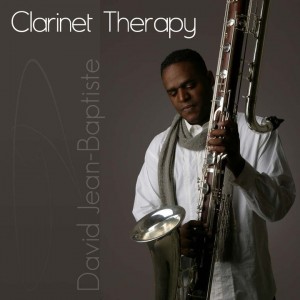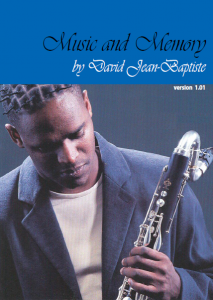 Retention and Recall are quite simply what memory is all about. It is the ability to hear music in your head by heart, and to be able to recall the music by heart where and when it is needed. Your brain’s ability to retain and recall information is staggering, you have virtually unlimited potential; you will find practical techniques to master retention and recall later in this book.
Retention and Recall are quite simply what memory is all about. It is the ability to hear music in your head by heart, and to be able to recall the music by heart where and when it is needed. Your brain’s ability to retain and recall information is staggering, you have virtually unlimited potential; you will find practical techniques to master retention and recall later in this book.
Types of memory
There are several kinds of memory and it’s useful to know about them.These are, muscularmemory; aural memory; visual memory, where the musician creates a mental picture of the music score and or the geography of an instrument. There is standard memory, hand memory, intellectual memory, the type of memory that is based on analysing the music in detail, working memory, long-term memory, eidetic memory and déjà vu.
Muscular memory consists of the movements of the hands, arms and fingers that the brain recalls easily if there has been a lot of repetition in the learning process. So for muscular memory repetition is vital. Dancers have a saying `get the dance in the muscle´. The same applies to musicians.
Aural memory consists simply of remembering the tune in your head, basically picking the notes from out of the air. This can be developed to include the chord changes of the song, recognising patterns, scales and intervals. We all have some natural aural memory because everyone can sing or whistle a tune without access to the music. Attaining a highly developed aural memory requires much training; jazz and folk music demands its performers to be particularly
developed in this area.
Visual memory relates to the written music page. This is about recognising patterns and shapes on the page, and reproducing them in your mind’s eye; this could be called photographic memory. You can remember the way the music is set out on the page and actually what the notation looks like in the form of a picture in your mind.
Standard memorization gives the musician the ability to begin at any point in the music, and to play until a specific point in the music. This type of memorization requires more practice and concentration than hand memorization (see below). Those who want to become instructors must be good at standard memorization, because they will be required to play small portions of music during the teaching process. It is also very convenient to cut the
length of a particular piece for time-constrained performances.
Hand memory is not a conscious type of memorization like you might use to learn musical terms like adagio, allegretto or the running order of songs in a concert. Instead, the brain actually memorizes the pattern followed by the fingers and the musician generally does not need to think about what they are playing as it happens. This type of memorization is excellent when the musician needs to play the entire piece from memory. However, it is not quite as powerful as standard memorization.
Intellectual memory consists of knowing and analysing how the music is constructed in every detail inside and out. Things like knowing all the scales, arpeggios and chords, recognising and remembering them as they appear in the music aid intellectual memory. Chords are particularly helpful since they show how most of the notes
relate to each other. Knowing about chords, progressions and structures helps to understand how the music unfolds.
Working memory or short-term memory is quite simply the amount of musical information that a person can hold for a brief period of time in the conscious part of mind. Modern research has shown that a person can hold up to seven plus or minus two chunks of information at a time, before they basically trance out. This can be a very useful thing to know when taking in information.
Long-term memory is information that we keep stored for a long time. Most people can remember the first song they learned to play on their instrument. Long-term memory has virtually infinite capacity.
Eidetic memory, photographic memory, or total recall is the ability to recall images, sounds, or objects in memory with great accuracy and in seemingly unlimited volume; Wolfgang Amadeus Mozart had this ability.
Déjà vu , a subjective feeling that an experience that is occurring for the first time has been
experienced before. This is moving more into the paranormal aspect of memory. However this has happened to me on more than one occasion, where I found myself playing in a place where I had only previously visited in a dream.
Fringe Benefits
In addition to music, musicians are generally excellent at memorizing just about anything. Many times, the unconscious ability to memorize comes as a surprise to adults who began music education as a young child. Often, they do not equate their unique ability with thecountless hours of instrument practice and sight-reading. However, there is definitely a significant advantage when memorization skills are developed at young age and are not the sole focus of one’s efforts. Memorization abilities are merely a side effect of doing something amusician loves to do, playing and playing well from memory.
Those who realize their unique ability to memorize will excel in other areas of their life, in education for example. And, the ability to utilize the brain’s power to memorize increases confidence and allows older adults to maintain their memory function longer than those who have never had any sort of musical training. Certainly piano players are often considered the best memorizing musicians. In reality this is not really true, playing any musical instrument
well and spending the time necessary to perfect passages of any sort will give the musician a definitive ability to stay sharp and focused throughout their lifetime.
There are many ways that music assists our memory processes. Some music helps to hold part of our attention, and we take in more information in a highly focused state. Such music can lead people into an alpha brain wave state. The music of Johann Sebastian Bach has power to do this. Try writing or reading while listening to Bach. Alpha is a perfect learning state for taking in information through auditory channels. Music also evokes emotions and stimulates
visual imagery.
Have Fun, David
David Jean-Baptiste
© The Wellness Clarinet Ltd 2012
Sample from the book:Music and Memory (www.myspace.com/musicandmemory)
(David’s Musical Memory Exercise)
 Think of the last time you played, maybe with friends, in a concert situation or in your bedroom or a practice room; choose a pleasant memory. Were you sitting or standing? Were there other people with you, other musicians and/or an audience? What clothes were you wearing? See the colours of the cloth, textures and feel of the material on your skin. What was the air like? Were you outside or in? Was it light or dimmer? Is the picture still or moving? Become more aware of movement. Feel the instrument in your hand, the pressure keys under your fingers, how were you breathing as you played or sang. Were you hot, warm or comfortable at room temperature? What did you play and for how long? Were you playing fast or slow, loud or soft? How many sounds were there? What was your tone like? As your memory becomes richer in detail, in your inner ear what direction does the sound come from? Feel your connection with the instrument grow. Feel the music you played in your body, it’s rhythm, harmonies and melodies… and make them louder in your mind’s ear. Enjoy the weight of your feet on the ground. Where in your body did you feel the music, allow this feeling to grow? Become aware of the notes as you played, the higher ones and lower ones. As this memory becomes clearer and more detailed, are you in the mental picture (associated)? Or are you looking at yourself in the picture (disassociated)? Is your picture focused or unfocused? Find the zoom lens of your camera and zoom in. Then step into the picture, make it brighter and panoramic (see all around you)…Now double the feeling and the passion… and then again. Do this as often as you like until you are totally there and more…
Think of the last time you played, maybe with friends, in a concert situation or in your bedroom or a practice room; choose a pleasant memory. Were you sitting or standing? Were there other people with you, other musicians and/or an audience? What clothes were you wearing? See the colours of the cloth, textures and feel of the material on your skin. What was the air like? Were you outside or in? Was it light or dimmer? Is the picture still or moving? Become more aware of movement. Feel the instrument in your hand, the pressure keys under your fingers, how were you breathing as you played or sang. Were you hot, warm or comfortable at room temperature? What did you play and for how long? Were you playing fast or slow, loud or soft? How many sounds were there? What was your tone like? As your memory becomes richer in detail, in your inner ear what direction does the sound come from? Feel your connection with the instrument grow. Feel the music you played in your body, it’s rhythm, harmonies and melodies… and make them louder in your mind’s ear. Enjoy the weight of your feet on the ground. Where in your body did you feel the music, allow this feeling to grow? Become aware of the notes as you played, the higher ones and lower ones. As this memory becomes clearer and more detailed, are you in the mental picture (associated)? Or are you looking at yourself in the picture (disassociated)? Is your picture focused or unfocused? Find the zoom lens of your camera and zoom in. Then step into the picture, make it brighter and panoramic (see all around you)…Now double the feeling and the passion… and then again. Do this as often as you like until you are totally there and more…
Have fun with it…
David Jean-Baptiste
© The Wellness Clarinet Ltd 2012
Biography
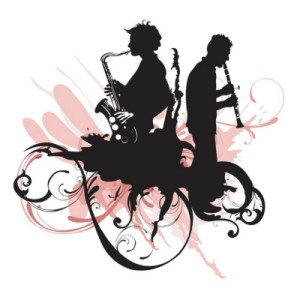 Bilk earned the nickname Acker from the Somerset slang for ‘friend’ or ‘mate’. His parents tried to teach him the piano, but as a boy, Bilk found it restricted his love of outdoor activities including football. He lost two front teeth in a school fight and half a finger in a sledging accident, both of which Bilk has claimed to have affected his eventual clarinet style. He learned the clarinet while serving in the Royal Engineers in the Suez Canal Zone after his sapper friend John A. Britten gave him a clarinet that he had bought at a bazaar and had no use for. The clarinet had no reed and Britten fashioned a makeshift reed for the instrument out of some scrap wood, and by the mid-1950s he was playing professionally.
Bilk earned the nickname Acker from the Somerset slang for ‘friend’ or ‘mate’. His parents tried to teach him the piano, but as a boy, Bilk found it restricted his love of outdoor activities including football. He lost two front teeth in a school fight and half a finger in a sledging accident, both of which Bilk has claimed to have affected his eventual clarinet style. He learned the clarinet while serving in the Royal Engineers in the Suez Canal Zone after his sapper friend John A. Britten gave him a clarinet that he had bought at a bazaar and had no use for. The clarinet had no reed and Britten fashioned a makeshift reed for the instrument out of some scrap wood, and by the mid-1950s he was playing professionally.
Bilk was part of the boom in traditional jazz that swept the United Kingdom in the late 1950s. He first joined Ken Colyer’s band in 1954, and then formed his own ensemble, The Paramount Jazz Band, in 1956. Four years later, their single “Summer Set,” a pun on their home county co-written by Bilk and pianist Dave Collett, reached number five in the British charts and began a run of eleven top 50 hit singles.
Bilk was not an international star until an experiment with a string ensemble and a composition of his own as its keynote piece made him one in 1962.Upon the birth of his daughter, he composed and dedicated a melody entitled “Jennifer” (her name). He was approached by a British television serial series for permission to use that melody, but to change the title to “Stranger on the Shore”. He went on to record it as the title track of a new album in which his signature deep, quivering clarinet was backed by the Leon Young String Chorale. The single was not only a big hit in the United Kingdom, where it stayed on the charts for 55 weeks, gaining a second wind after Bilk was the subject of the TV show This Is Your Life, but also shot to the top of the American charts at a time when the American pop charts and radio playlists were open to just about anything in just about any style. As a result, Bilk was the first British artist to have a single in the number one position on theBillboard Hot 100 singles chart. (Vera Lynn was the first British artist to top the U.S. Billboard charts with “Auf Wiederseh’n Sweetheart” in 1952). “Stranger on the Shore” sold over one million copies, and was awarded a gold disc. The album was also highlighted by a striking interpretation of Bunny Berigan’s legendary hit “I Can’t Get Started.” At one point, at the height of his career, Bilk’spublic relations workers were known as the “Bilk Marketing Board”, a play on the then Milk Marketing Board.
In January 1963, the British music magazine, NME reported that the biggest trad jazz event to be staged in Britain had taken place at Alexandra Palace. The event included George Melly, Diz Disley,Alex Welsh, Chris Barber, Kenny Ball, Ken Colyer, Monty Sunshine, Bob Wallis, Bruce Turner, Mick Mulligan and Bilk. Bilk recorded a series of albums in England that were also released successfully in the United States (on the Atlantic Records subsidiary Atco), including a memorable collaboration (Together) with Danish jazz pianist-composer Bent Fabric (“The Alley Cat”). But his success tapered off when British rock and roll made its big international explosion beginning in 1964, and Bilk shifted direction to the cabaret circuit. He finally had another chart success in 1976, with “Aria,” which went to number five in the United Kingdom. In May 1977, Bilk & His Paramount Jazz Band provided the interval act for the Eurovision Song Contest. In the early 1980s, Bilk and his signature hit were newly familiar, thanks to “Stranger on the Shore” being used in the soundtrack to Sweet Dreams, the film biography of country music legend Patsy Cline. Most of his classic albums with the Paramount Jazz Band have been reissued and are available on the UK based Lake Records label.
Bilk has been described as “Great Master of the Clarinet”. His clarinet sound and style was at least as singular as had been those of American jazzmen such as Benny Goodman, Artie Shaw, andRussell Procope, and “Stranger on the Shore” – which he was once quoted as calling “my old-age pension” – remains a beloved standard of jazz and popular music alike.
Acker Bilk continues to tour with his Paramount Jazz Band, as well as performing concerts with his two contemporaries, Chris Barber and Kenny Ball (both of whom were born in 1930) as the 3B’s.
One of his recordings is with the Chris Barber band, sharing the clarinet spot with the band’s regular reedsmen, John Crocker and Ian Wheeler. He made a CD with another legend of British Jazz Wally Fawkes for the Lake Records label in 2002. He has appeared on two recent albums by Van Morrison, Down the Road and What’s Wrong With This Picture?.
 Just want to share with you a few thoughts about the clarinet and why I believe it a good choice of instrument to learn.
Just want to share with you a few thoughts about the clarinet and why I believe it a good choice of instrument to learn.
The clarinet is one of those instruments when a person reaches an acceptable level of ability it brings a sense of as the French say, a certain Je ne sais quoi…When a person is able to express themselves on a musical instrument, there is a corresponding emotion associated with it. Loud amplified electric guitar playing can make the player feel indestructible. The saxophone is generally louder, conical and more often seen and heard than its brother the clarinet, and people generally feel a connection to popularity and sense of release when playing it. The trumpet is regal, perfect to proclaim the fanfare of kings. In jazz the trumpet is looked upon as a leaders instrument. Think of Miles Davis, Louis Armstrong, Wynton Marsalis to name a few.
The clarinet on the other hand has a little something intangible to it. A combination of clarity in tone, finesse in sound delivery and a tad above the rest, in the best possible meaning of course. Also in classical music there is a healthy repertoire of music written for the instrument.
Maybe it’s the fine keywork in relation to wood, lathed into a cylindrical bore. Yes there are metal clarinets and plastic clarinets, even clarinets made from glass. There is something about the wood, rosewoods, grenadilla, African blackwoods, cocobollo, the distinctive shape of the instrument and the focused sound, that in my opinion sets it above the rest.
So far I have been referring to the more often seen B flat clarinet in this article to learn to play clarinet online. When we bring other members of the clarinet family into the equation, the appeal of the clarinet sky rockets exponentially. The bass clarinet is totally sublime, the contra-bass clarinet can be dark and dirty, perfect for adding weight and authority to bass lines in any music genre. The basset-horn can be so sweet sounding at the top of the instrument, with a singing quality to it. Then sounds like the younger brother of the bass clarinet in its lower register. It’s no surprise that Mozart fell in love with the basset-horn.
So there you have it, learn to play the clarinet…The instrument is perfectly poised to grace ever evolving musical soundscapes with depth and meaning. It is on, and you are about to be part of it.
Best Regards David
David Jean-Baptiste
© The Wellness Clarinet Ltd 2012
David Jean-Baptiste In Conversation with Anton Weinberg
Anton Weinberg a student of Hans Keller has held international professorships of music at Indiana University, professor of clarinet at the Guildhall School of Music and Drama in London’s Barbican Centre, a professor in the new Gulbenkian and Leverhulme Trusts, and a member of the faculty for the government-sponsored National Youth Orchestra of Spain.
He has been a professor at Darlington International Summer School under the directorship of Peter Maxwell Davies, a faculty member at the National Centre of Orchestral Studies in New York, and a visiting professor at the Conservatories of Peking and Shanghai, where he gave lectures as part of the first Anglo/American cultural visits. He is also an authority on the sociology and psychology of music.
Anton’s book ‘Unfinished Sentences,’ with a preface from Lord Menuhin, stands as a testament to mastery.
‘Brilliant concepts, I recommend Anton Weinberg as a marvellous musician, interpreter, teacher and thinker’. (Lord Menuhin)
‘The most versatile of us all, he can be regarded as an expert in so many different fields. In addition he is unusually articulate revealing matters which many of us can only hope to demonstrate’. (Jack Brymer O.B.E)
I met with Anton one early autumnal evening in Paddington station, over a coffee to discover what light this man may be able to shine on mindset in relation to performing. Naturally I have my own practical techniques on this. Other than the obvious one of visualizing a perfect performance, I approached the meeting with one main question…What can a performer do mentally in preparation for a performance, to increase the likelihood of giving the audience a wow! Moment…a moment of magic?
A moment of magic can best be described as a point in time where thoughts disappear and the viewer is suddenly in another world.
Performing to an audience as I see it is a multi-directional wave of consciousness connecting everyone in the room. A connection comprised of sounds, bodily sensations and impressions. The performer creates a moment of magic when in such a state of complete flow that they draw the audience into a moment of total awareness.
Anton agreed, adding that a performance mindset that creates magic is totally instinctive, and the essence of art is interaction. He talked of Andres Segovia and how he would take a passage or phrase of music and interpret it in thirty different ways in preparation. This was certainly an ah ha moment and struck a chord with me.
He spoke of cellist Rostropovich and Sting how they can summon these great musical moments with a jazz like improvisatory flair. How Katya Labeque plays chords so improvisatory, formal and simple with an unexpected quality; as Beethoven and Bach used to improvise at parties.
Anton told stories from the lives of actors and comedians Sid James, Morecombe and Wise, and Tony Hancock; stories of situations that created moments of magic in comical genius. He talked of Pushkin http://rosiamar.nm.ru/ruslan.html and that audiences in all forms of art seek these moments of magic be it literature, dance or visual art.
Indeed I thought, these special moments have the power to enlighten people and change the course of their lives.
“The instrument is just a vehicle, sense the audience, feel the corporate character of the audience,” he said. “It is something you can’t really prepare for, in fact too much preparation can be counter productive. When Leopold Stokowski the British born conducter conducted, if there was a fidgety audience he would play quieter and slower. Dynamics in the music have nothing to do with volume and everything to do with character. A silent whisper can be infinitely more potent than an outburst. Maintain a positive mindset question everything and believe nothing.”
In my mind it had been a very satisfactory meeting, as Anton had totally over delivered on my question. Leaving me plenty to think about and had created ample growing room for me to improve on my own performance.
We both agreed that performance is where the money is, as these days what is expected of the top players has become homogeneous in terms of sound, technique and musicality. Now unlike the past it is becoming harder to tell one top player from the other on recordings.
“Everyone is a genius but if you end up measuring a fishes ability by his ability to climb trees he’ll end up thinking he’s stupid” (Einstein)
So to summarise, to harness the power to create moments of magic do everything to play with increasing awareness and never over prepare. Ask yourself often, how can I create a moment in the now? Knowing in your ability to do this. The more we think of our own individual abilities to create magical moments, the stronger these thoughts will become and the more often they will happen.
Have Fun David
© The Wellness Clarinet Ltd 2012
 May the classical player play Weber’s concertos differently from the last time performed. Some may say this is a challenge, but when looked upon in the bright light of reality it is not really. Great clarinetists do this consistently and naturally making hairs stand on end each time at that. We may embrace the same intention of awareness when playing the music of Brahms and Mozart, Poulenc and Milhaud. Playing the notes and then forgetting them. Meaning our spirit and true nature takes command over our controlling and suppressive musical tendencies. So we can flow and therefore speak through the notes of the music like a new wave of consciousness. So we can feed our audience something new and inspirational; even though the presentation of notes, their order, melodies rhythms and harmonies of the music, may have remained the same as they have always been for the past 300 years.
May the classical player play Weber’s concertos differently from the last time performed. Some may say this is a challenge, but when looked upon in the bright light of reality it is not really. Great clarinetists do this consistently and naturally making hairs stand on end each time at that. We may embrace the same intention of awareness when playing the music of Brahms and Mozart, Poulenc and Milhaud. Playing the notes and then forgetting them. Meaning our spirit and true nature takes command over our controlling and suppressive musical tendencies. So we can flow and therefore speak through the notes of the music like a new wave of consciousness. So we can feed our audience something new and inspirational; even though the presentation of notes, their order, melodies rhythms and harmonies of the music, may have remained the same as they have always been for the past 300 years.
A key goal in jazz music is to be open to the moment musically and to respond accordingly, rather like a medium of sort; a musical response to the musical inclinations of the other performing musicians on stage. Also to the audience; aiming to create a new melody or feeling. I know a Danish pianist composer and improviser who can improvise complete works of music. Every time he plays it will be different to anything you heard previously. He simply has an open channel to universal energy flow. So therefore if we can do this It must be possible for a clarinetist to tap into subtle energies in a room of people so to create a euphoric feeling in them when playing the music of Bach for example.
Once at a small Improvised music event in London, two experimental improvisers toyed on stage. They toyed around looking for new ways to turn their performance, and to take the audience by surprise. At one point the bassist of the duet rolled up a carpet he was using to keep his bass in place while playing and began hitting his bass with the carpet, producing some weird but different acoustic effect. “What is that man doing to that lovely instrument?” was the general feeling in the room. Through the ensuing shock that followed and general apprehensive atmosphere in the audience created by this action, someone shouted out “Rubbish!” a brief pause followed, then…”rubbish rubbish, rubbish, rubbish, rubbish.” The very next turn in the music saw the musicians using the word rubbish spontaneously in their improvisation. Be clear on this, not to say improvisation is rubbish, because it is an art form as valid as any.
The new iPhone 4s comes out this week, if you want to be on the edge of it all; include a new ringtone from the latest iPhone in your current recording. This is something that could never have happened in the past.
So in summary modern clarinet performance has everything to do with present moment awareness and responsiveness to what’s happening in the moment. These might be thought processes, sensations, dreamscapes as well as physical occurrences. Both jazz and classical music it is the same processes at play; tune up and tune in.
Have Fun, David
© The Wellness Clarinet Ltd 2012
By BOB BERNOTAS
When you hear the phrase, “New Orleans jazz,” what three instruments immediately come to mid? That’s right: cornet, trombone, and clarinet. In those early jazz combos, the clarinet provided a soaring, high register obbligato that enhanced, and, in the hands of the amazing Sidney Bechet, challenged, the cornet’s lead line. A decade or so later, the clarinet occupied a rightful place as one of the signature instruments of the big band era, serving as a distinctive tone color in the ensemble and an important solo voice. After all, the so-called “King of Swing,” Benny Goodman, was a clarinetist.
But starting with the bebop era, the clarinet inexplicably began to fall out of fashion in jazz. Despite the persistence of such gifted boppers as Buddy De Franco and Jimmy Hamilton, by the end of the 1950s the instrument had all but disappeared from the music’s mainstream. None of the important small bands of the day, and, with the exception of Duke Ellington, very few big bands, featured a clarinetist. As a consequence, few pure clarinet players – as opposed to saxophonist doublers – came to prominence in jazz in the post-war period.
Today, many (perhaps most) jazz listeners regard the clarinet as a relic of the past, the property of moldy figs and swing-era diehards. Nevertheless, though the 1960s and 1970s the avant-gardists, in their quest for new sounds (as well as old ones), rediscovered the instrument, at least in a limited way. Some even began to feature members of its extended family, like the alto, bass, and contrabass varieties, occasionally in multi-clarinet ensembles. And during recent decades, this music has been enriched by a handful of dedicated clarinet specialists, like the late John Carter, Alvin Batiste, and Don Byron, who have fought to keep their instrument in the forefront of creative jazz.
Sidney Bechet: The Best of Sidney Bechet (Blue Note, 1994; original recordings, 1939–1953)
This New Orleans-born master dominated every ensemble he ever played in with his florid, vibrato-driven bravura. Among its treasures, this collection includes two genuine jazz masterpieces: Bechet’s soulful clarinet blues, “Blue Horizon,” and “Summertime,” featuring his inimitable soprano saxophone.
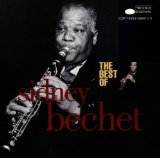
Jimmie Noone: An Introduction to Jimmie Noone: His Best Recordings, 1923–1940 (Best of Jazz,1997)
Originally a New Orleans contemporary of Bechet, Noone made his mark in Chicago as both a blues specialist and a singular interpreter of such popular tunes as “I Know That You Know” and his lovely theme song, “Sweet Lorraine.” He also was an early and important influence on the young Benny Goodman.
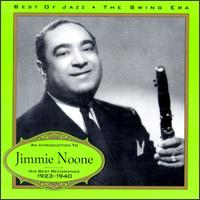
Barney Bigard: Barney Bigard Story, 1929–1945 (EPM,1996)
Bigard brought the New Orleans Creole clarinet tradition into Duke Ellington’s orchestra, where, from 1928 to 1942, his fleet solos and intricate embellishments lent color and character to countless jazz classics. His long post-Ellington career included a stint with Louis Armstrong’s All-Stars (1946–55).
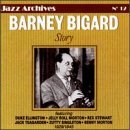
Benny Goodman: Complete RCA Victor Small Group Master Takes (Definitive,2000; original recordings, 1935–1939)
Although his big band defined the Swing Era for millions of fans, over the years Goodman played his best jazz with his various all-star small groups. This two-CD set spotlights BG’s original trio (with pianist Teddy Wilson and drummer Gene Krupa) and quartet (which added Lionel Hampton on vibes).
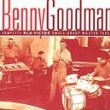
Buddy De Franco: Mr. Clarinet (Verve,1953)
De Franco emerged from mid-1940s big band reed sections (notably that of Tommy Dorsey) to become the essential bebop clarinetist. This typically brilliant session features his stellar working quartet of the day with pianist Kenny Drew, bassist Milt Hinton, and drummer Art Blakey.
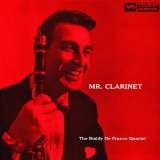
Jimmy Hamilton: Can’t Help Swingin’ (Prestige,1961)
For 25 years (1943–1968) this technically superior musician served as Duke Ellington’s principal clarinet soloist. Hamilton plays both clarinet and his Ben Webster-inspired tenor saxophone on these tracks, which also feature two all-time jazz giants, trumpeter Clark Terry and pianist Tommy Flanagan.
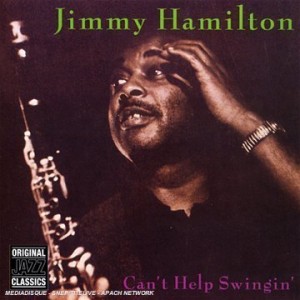
Eric Dolphy: Out There (New Jazz/OJC,1960)
More than anyone else, this visionary multi-reedplayer established the bass clarinet as a jazz instrument. On this pianoless quartet date with Ron Carter on cello, Dolphy is heard on bass (“Serene” and “The Baron”) and B-flat clarinets (Charles Mingus’ “Eclipse”), as well as flute and alto saxophone.
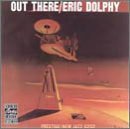
John Carter: Castles of Ghana (Grammavision,1986)
A gifted instrumentalist and an important composer, Carter helped carve a niche for the clarinet in the jazz avant-garde. This recording, the second movement of his monumental five-part epic Roots and Folklore: Episodes in the Development of American Folk Music , is regarded by many as Carter’s finest work.

Clarinet Summit (Alvin Batiste, John Carter, Jimmy Hamilton, David Murray): In Concert at the Public Theater (India Navigation,1981)
Formed by John Carter, this quartet united three hardcore modernists – Carter, Batiste (who lives and works in New Orleans), and Murray (on bass clarinet) – with respected veteran Hamilton. Their now legendary debut concert offered a wide-ranging repertoire of Ellingtonia, bebop, and free playing.
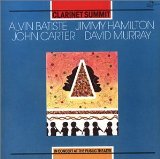
Hamiet Bluiett: The Clarinet Family (Black Saint,1984)
This eight-clarinet ensemble (plus bass and drums) truly encompasses the instrument’s entire family, from the tiny E-flat sopranino to the large contrabass. This one-time-only live performance features Bluiett on alto clarinet, along with such accomplished clarinetists as Buddy Collette, Don Byron, and J.D. Parran.

Don Byron: Music for Six Musicians (Nonesuch,1995)
Committed to bringing the clarinet back into the forefront of creative jazz, Byron respects no musical boundaries. His creed is, “If it can be played, it can be played on the clarinet” – swing, klezmer, lieder, show tunes, funk, or, on this sextet session, skronky, Afro-Cuban-inspired original compositions.
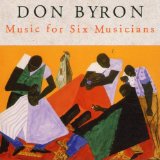
Paquito D’Rivera: The Clarinetist: Vol. 1 (Music Haus,2001)
On this rare all-clarinet recording, the Cuban-born reed virtuoso performs with a chamber orchestra and a Latin jazz rhythm section, and in trio with piano and cello. D’Rivera skillfully bridges the gap between classical and jazz, with a healthy helping of tango á la Astor Piazzola mixed in.
Hello Dear Readers David Here…
The Contra-bass clarinet is truly an amazing instrument and a totally under used member of the Clarinet Family. Think about the low C on a Bass Clarinet and then try to hear the C an octave lower…You are now at the bottom of the Contra-bass Clarinet.
Although I could ramble on about it I won’t talk to much about it, but will give you a long Solo Contra-bass Clarinet Improvisation I did about a year ago call `Mind in Body´…Bear in mind it is an improvisation!…Notice how the sound of the instrument resonates with the energy centers in your body opening them…Enjoy
(click image below)







